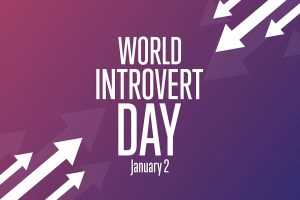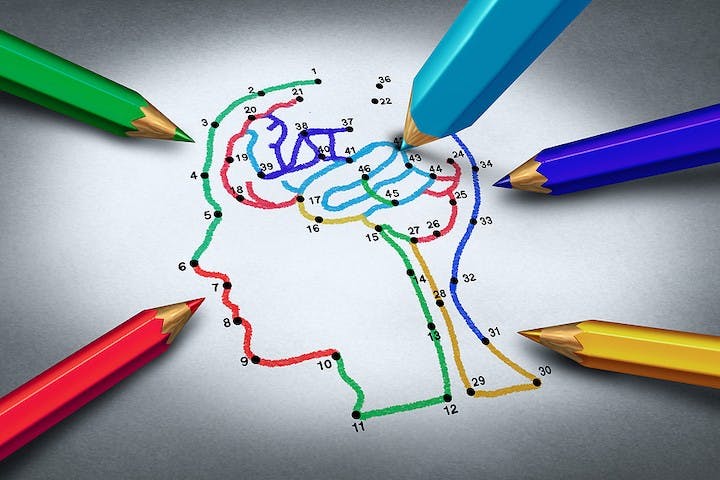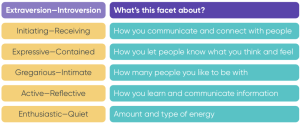In case you missed it (many probably did), last week (2nd January) was ‘World Introvert Day.’
There’s probably a massive irony about this particular awareness day. After all, introverts are probably a group of people that are the least likely to want to draw attention to this particular day.

Joking aside though, the day – which is designed to draw employers’ attention to the fact that 57% of the working population are introverts – serves as an important reminder that non everyone is wired the same, meaning not everyone will thrive under the same working conditions.
The problem, however, is that discussions around introverts (and by association, extraverts), tends to be very black and white.
It’s a conversation that tends to assume people are simply either extravert – gregarious or loud, or attention-seeking – or not. In other words there’s nothing in between, or no shades of grey.
But according to John Hackston, head of thought leadership at The Myers-Briggs Company, what employers often do not understand, is that introversion does itself cover a wide spectrum.
He says that knowing the different shades introversion comes in should be something more CHROs should invest their energies into, to ensure they’re treating people as well as they can.
Says Hackston – who is himself a self-proclaimed introvert: “Not all introverts are the same, and different types of introversion deserve more bespoke attention.”
He adds: “Around 50% of our behaviour is to do with our personalities. The rest of it comes from our jobs and the things we have going on in our lives. It all adds up to the fact that how people present their introversion is more nuanced that we typically think.” He says: “Most tend to present a ‘preferred’ style, and it’s this that is important to understand.”
So what are these preferred styles?
According to Hackston/ Myers-Briggs, there are five nuances that typically get presented, and they are the opposite to five styles of extraversion too.
Introverts can demonstrate all five of these characteristics, but according to Hackston they tend to have one or two dominant ones.
The fives types can be explained below:
The 5-Types of introversion:
(The extrovert quality is in normal text, the introvert quality is in bold)
1) Initiating/Receiving:
Hackston says: “This is about when people meet other people. Do they initiate conversations, or do they just want to be the person at the receiving end of one? Receiving introverts tend to want to wait till someone talks to them. As such, receiving people aren’t very good at ‘small-talk’. It’s not that they don’t have the confidence to do small-talk, it’s more that these people’s inner voice would be saying ‘why would I?’ These people don’t do talking for talking’s sake. The more extreme people are on this scale, the more the behaviour will be noticed.”
2) Expressive/Contained:
Hackston says: “People who are expressive share what they think very easily, but they are also less tactful. The introverted side of this is that these people are more constrained. These introverts typically decide to only share what they think is necessary. One downside to this, is that they may choose to withhold information – not deliberately, but just because they don’t see the value of sharing it, or are more private.”
3) Gregarious/Intimate:
Hackston says: “This is more around one-to-one relationships. Introverts make stronger distinctions between people they see as friends and those they see as acquaintances. As a result of this, introverts are less concerned with being popular. Often introverts display being both contained and intimate.”
4) Active/Reflection:
Hackston says: “This relates to how people take information and retain it. Active people learn best by ‘doing stuff’. Introverts, however, are more reflective, and prefer to want to think things through before saying or doing something. They are also more likely to remember things they’ve read.”
5) Enthusiastic/Quiet:
Hackston says: “With extraverts, you almost see their energy bursting out of them. What comes with this is an over-egging of things though. By comparison, introverts are quite calm. They tend to be understated, and they are often very nice people to have around.”
Why do these distinctions matter?
Although Hackston says some of the behavioural preferences of introverts are very easy to spot – such as those demonstrating initiating or receiving tendencies – others are less-so, and progressive CHROs should be wanting to determine them. [These nuances of Introversion can be found in Myers-Briggs’ MBTI Step II assessment].
He says: “Identifying these should not necessarily be used for selection purposes, but more when people are in organizations – for managers/employees to know themselves, so they can build up a level of self awareness in a positive way.”
He adds: “It helps staff pick out the ways they might make them work better with other people/teams.” He says: ‘It’s less about putting people into boxes, but instead educating staff and their colleagues about how they may be able to make changes to their behavior, around the things that are unique to them.”
He continues: “It’s a way of tapping into the differences people might have, and it gives people an understanding of ways they might be able to better connect with others.”
Understanding people’s introversion is not an excuse for them to be difficult
Seeing introverted colleagues in a more detailed way has the potential to allow managers to be more personal to employees.
But while everyone would concur that being more accepting of people’s differences, and more understanding of neurodiversity in general, is a good thing, there comes with this a warning:
What better understanding shouldn’t be, says Hackston adamantly, is giving people a license to be difficult at work, and then just blame it on their introversion:
“It doesn’t mean someone who is introverted has an excuse not to engage with people in the workplace,” he says.
He adds: “Just because someone has an introversion preference doesn’t mean they can’t do X or Y to better engage with their colleagues, and CHROs should be mindful of this. People can ‘flex’ their behaviour.”
MYTH-BUSTING: Having a preference for introversion does NOT mean someone is shy, socially awkward, quiet, a hermit, or doesn’t like people.

Source: The Myers-Briggs Company
Hackston on…
Q: Why introverts aren’t often known they’re in the majority?
“The statistics show 57% of people – ie the majority – are introverts, and this is generally a consistent statistic in whatever country you look at. I think the reason people tend to think there are more extraverts is because extraverts tend to shout the loudest, and proclaim their presence more obviously.”
Q: Are stereotypes about the performance of extraverts really true?
“It’s often thought sales-heavy organizations specifically to hire extraverts – seeing these people as better at closing sales, and being more confident with prospects. However, the data is not conclusive about this. Introverts are often better at making long-lasting relationships. We did our own study recently on pub managers, and what was a good predictor of performance. What we found was that the best performing managers also had the best numerical reasoning, but on personality, we found that being socially good was one trait that predicted performance, but that being ‘gregarious’ wasn’t. So it’s not always as simple as it sounds.”
Famous introverts:
Albert Einstein
Bill Gates
Sir Isaac Newton
Mark Zuckerberg
Abraham Lincoln
JK Rowling
Warren Buffet
Elon Musk
Barrack Obama

